Bonus Material: Amazon Marketing Plan + Pricing
On November 18 Amazon’s Head of Product Marketing sent us a private email about helping with Amazon’s marketing:

After chatting, we came up with a strategic marketing plan to help Amazon sell more of their Kindle devices.
I hope this can give you an idea of how to think about content marketing at scale with less content… but make sure every piece of content counts while moving people towards a product purchase.
FYI If you’d like to see the plan AND pricing we sent to Amazon, you can download it below as a pdf:
Then, follow our example to scale sales of your digital and physical products this year.
Amazon Marketing Plan (Product: Kindle Kids Edition)
Goal: Q4 sales of new Kindle Kids Edition.
Target Customer: Parents of kids aged 1-12.
Strategy: The strategy recommended is based on the ski slope strategy. At a high-level, this is:
Green Circle Content: content that drives organic traffic relevant to the product.
Blue Square Content: marketing campaigns for new leads/sales of the product.
Black Diamond Content: retargeting to convert traffic/leads to product sales.Green Circle Content
The content topics with the highest purchase intent fall into two broad categories:
- Kids book categories (i.e. “kids books” and “children's books”)
- Kids books (i.e. “harry potter books”, “dr seuss books”, “dog man books”, etc)
Based on organic traffic research, Amazon gets 4.9M organic visits per month and has 211,600 keywords ranking 1-10 on Google for “books” related searches:
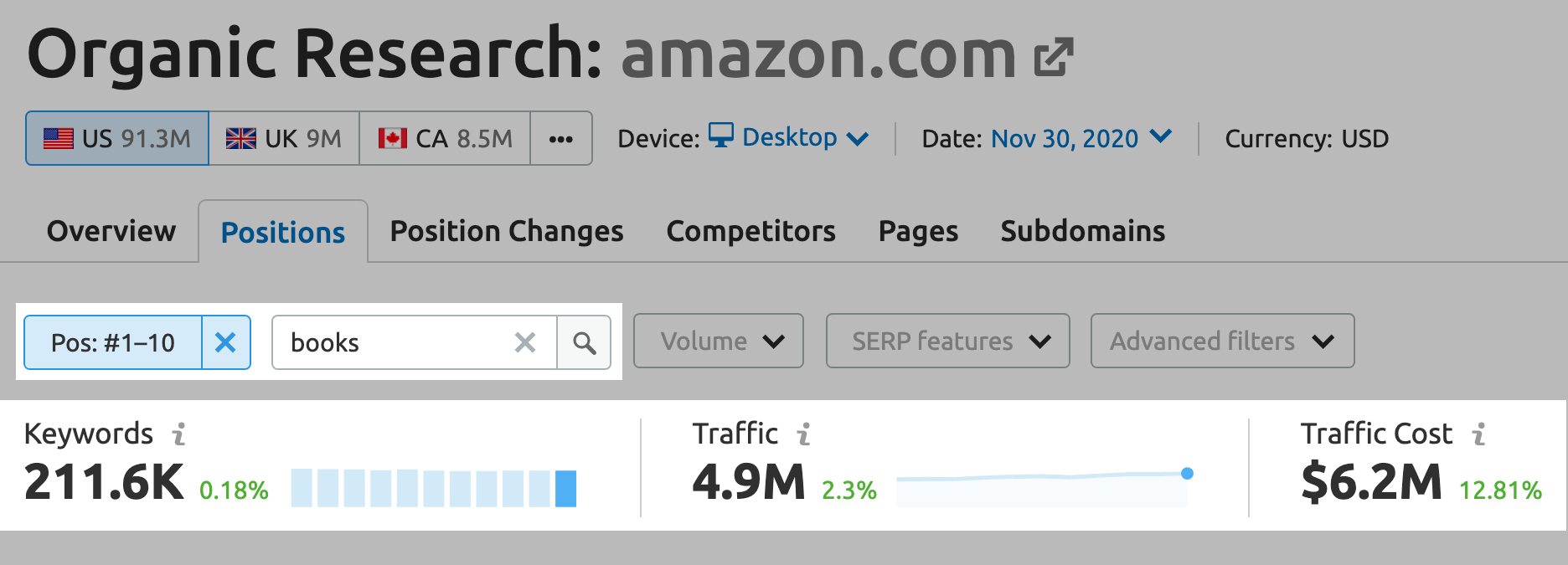
Some of the highest intent, highest searched topics include:
- books (Amazon rank #2)
- kids books (Amazon rank #2)
- childrens books (Amazon rank #1 and #2)
- best kids books (Amazon rank #2)
- best childrens books (Amazon rank #3)
- harry potter books (Amazon rank #2)
- dr seuss books (Amazon rank #2 and #3)
- dog man books (Amazon rank #3 and #4)
Basically, Amazon already gets bulk organic traffic for the highest purchase intent topics related to the product due to its massive book catalogue.
There is however a content gap for “best” and “how to” topics parents search for (but are unrelated to the product). These fall into two categories:
- “Best” kids topics (i.e. “best kids movies”, “best dogs for kids”, etc)
- “How to” kids topics (i.e. “how to teach a kid to ride a bike”, etc)

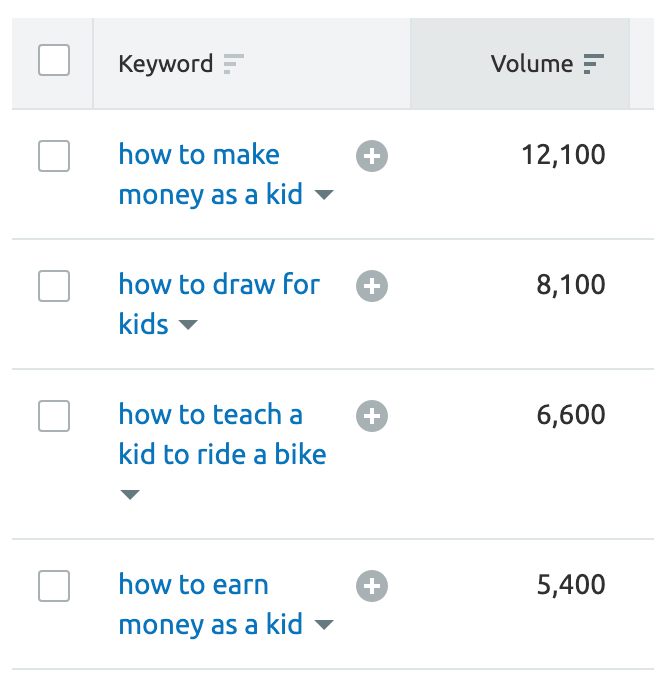
Amazon does not rank for these topics as parents intent is to find a list of the “best” breakfast recipes, movies, dogs, etc for their kids and Amazon product pages do not fulfill that intent.
Also, Amazon does not write any “how-to” tutorials for kids. (However some of the Amazon books for sale on kids “how to” topics rank on Google).
Content topics could be written on the highest traffic potential “best” and “how to” kids topics to get more parents to the site.
However as there is already so much higher purchase intent traffic, I’d recommend to focus on leveraging existing traffic with Blue Square and Black Diamond Content.
Blue Square Content
There are three marketing campaigns I recommend in the lead up to Q4:
- Dream 100 Campaign
Step 1: Make a Dream 100 list of influencers (bloggers and YouTubers) who have an audience of kids and parents.
Step 2: Offer the influencers a new Kindle Kids Edition device + generous affiliate commission in return for an honest product review, and ask them to schedule the review to be published on the Q4 product launch date.
Step 3: Have 100 influencers publish their review on launch day (coordinated with PR efforts) to create an effect of parents seeing the product everywhere.
For example, “Ryan’s World” has 23.2M subscribers and reviews children’s toys with most videos getting 500K+ views. This would be a dream influencer for Kindle Kids:
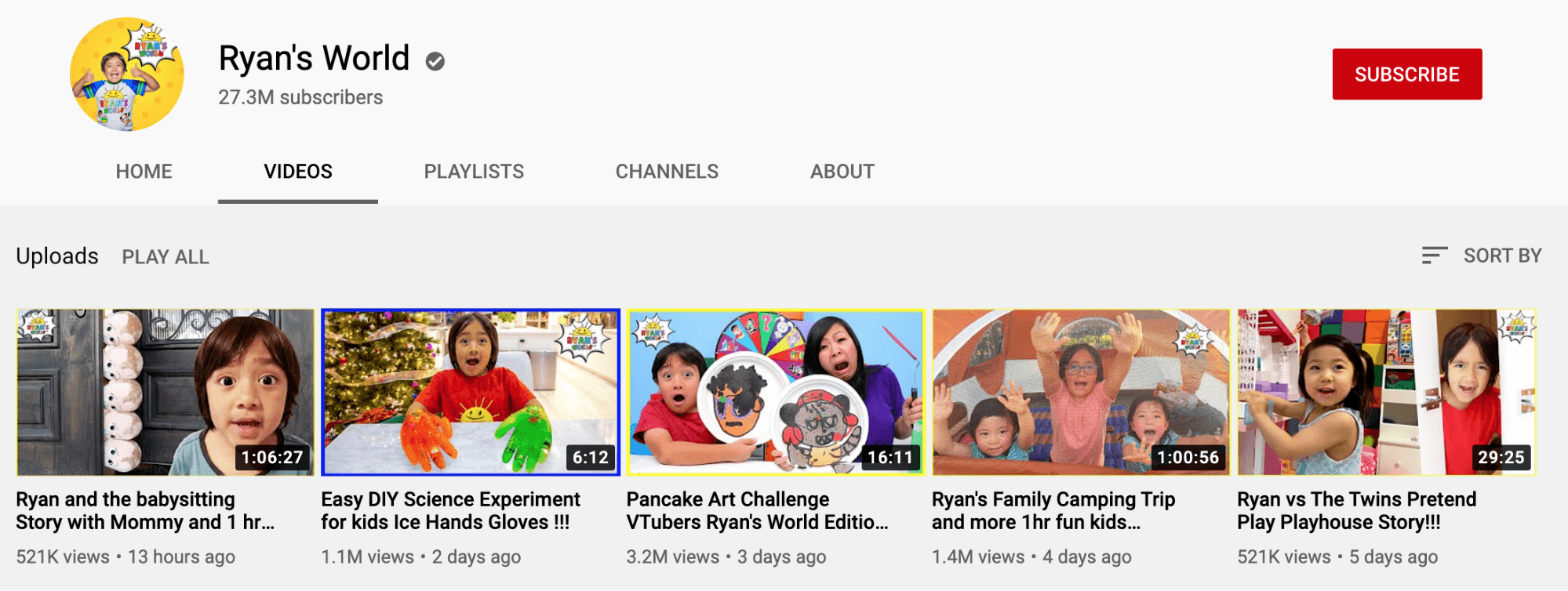
2. Viral Giveaway Campaign (Monthly)
Step 1: Create a giveaway for one free Kindle Kids Edition every month leading up to the product launch.
Step 2: Promote the giveaway page three ways:
1- On exit intent to people who leave a kids book page.
2- On the Kindle Kids Edition product page (when it’s out of stock).
3- To Amazon email subscribers who opted in to receiving promotional emails (if possible).
Step 3: People enter their email to enter the giveaway, then are given the option to get more entries by sharing the giveaway page.
For example, the giveaway page might look something like this:

Then the confirmation page will look something like this:
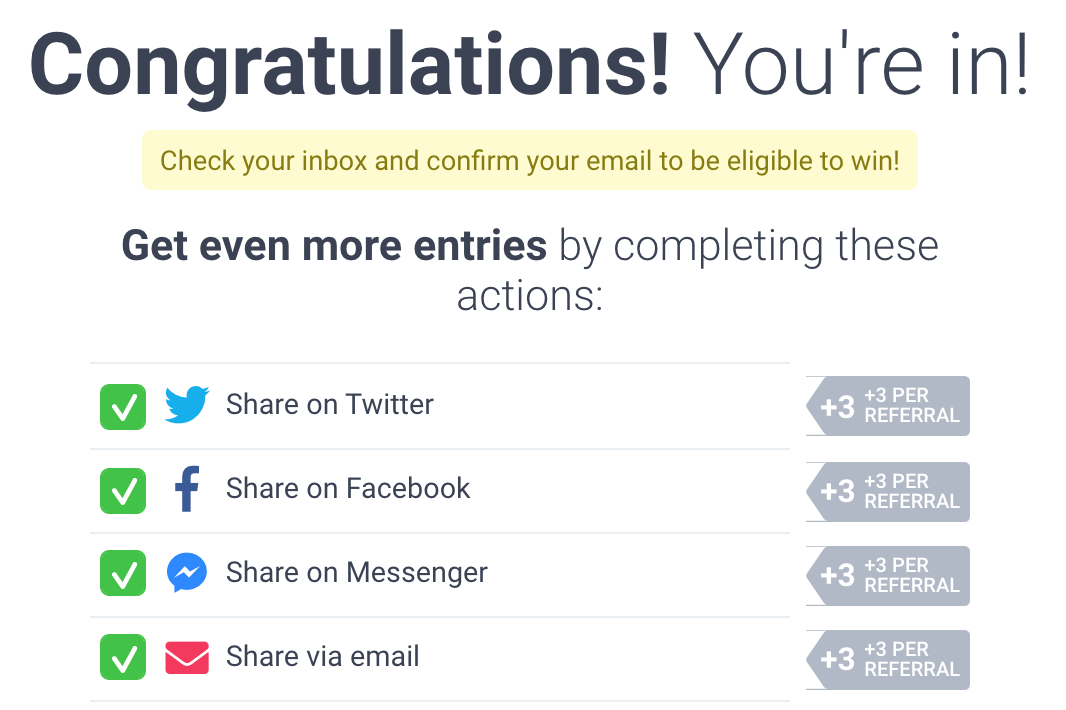
3. 7-Day Product Launch Email Campaign
Day #1: Announce the new Kindle Kids Edition product launch to the email list (built from the giveaway) in Q4 and mention the number in-stock.
Day #2: Talk about unique features (designed for reading only NOT video games, age filter, parental controls, vocabulary builder, word wise, etc)
Wait 2 days
Day #5: Answer top FAQs from the product page (Does this have backlighting similar to the paperwhite?, Is it easy to keep your adult library separate from your child's library?, etc)
Day #6: Reminder to buy while still in-stock with a list of benefits.
Day #7: Last reminder to buy in time for Christmas with a list of benefits.
The goal of the Dream 100 campaign is to get Kindle Kids in front of parents who may have never seen the Kindle before or bought from Amazon.
The goal of the viral giveaway campaign is to leverage all the existing high purchase intent traffic the site gets and build an audience of parents who we know are interested in Kindle Kids, so we have a list to promote the product to, for Q4.
Black Diamond Content
From the Children’s Kindle Books page on Amazon there seem to be four specific ages of kids who benefit most from Kindle Kids books:
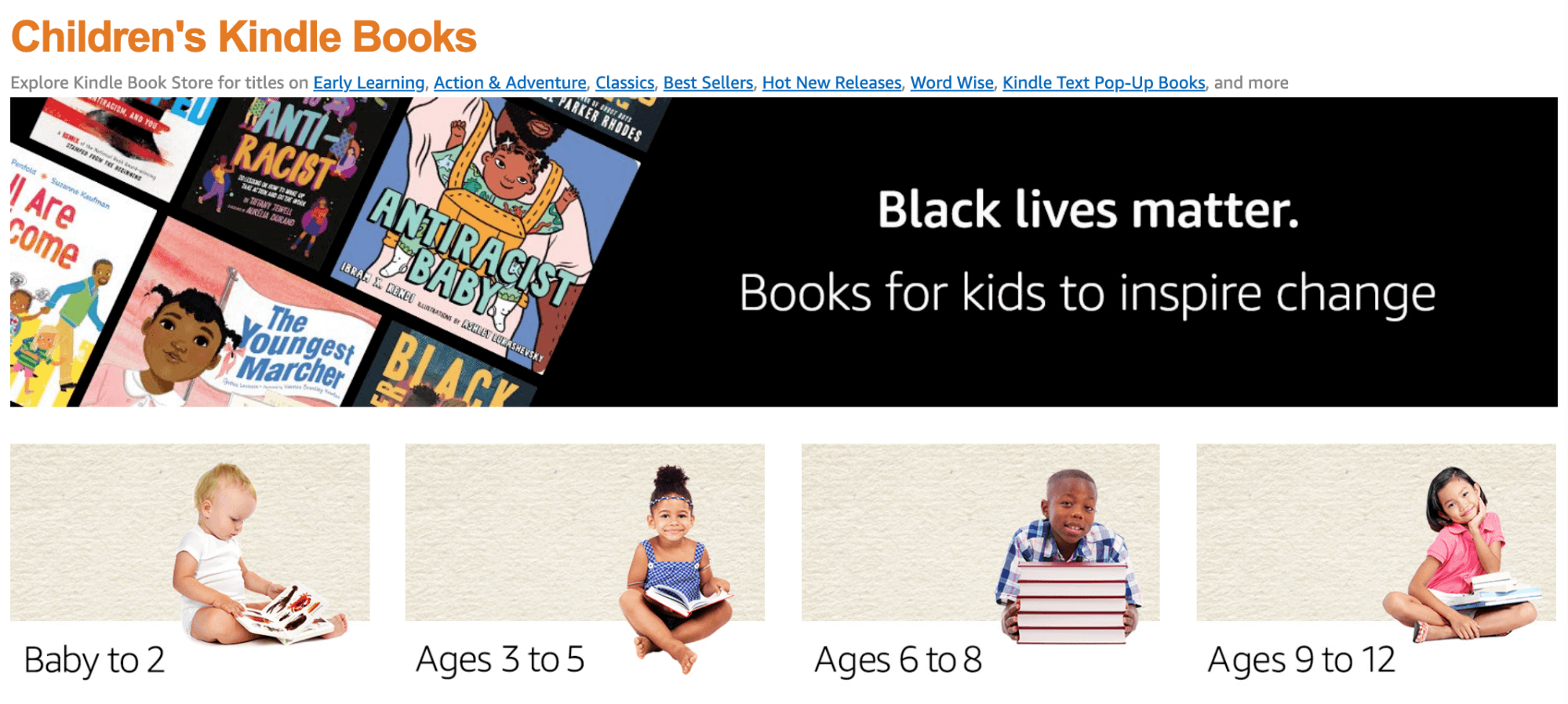
I would want to create one case study for each of these segments:
- Baby to 2
- Ages 3 to 5
- Ages 6 to 8
- Ages 9 to 12
Each case study would be designed and written in a similar format:
- About the customer
- Screenshot of the product review
- Customer’s before situation
- Customer’s after situation
- Books their kid(s) have read on Kindle Kids
- List of unique features they use (with screenshots from inside their Kindle)
- Call to action to buy Kindle Kids Edition
I would want to speak to four of the 234 customers who have left 5 star reviews to be able to write these case studies:

Once written I’d want to get these case studies in front of the following audiences using retargeting ads across Google and Facebook:
CUSTOMERS (most likely to convert)
1- Customers who have bought children’s books on Amazon
2- Customers who have bought kids toys on Amazon
3- Customers who have bought boys’ fashion products on Amazon
4- Customers who have bought girls’ fashion products on Amazon
LEADS
5- Leads from monthly Kindle giveaways
VISITORS
6- Visitors who have been on any kids-related product page on Amazon
The reason we run retargeting ads is because these people have already shown transactional intent by purchasing, or shown interest in a kids-related product.
This gives us the highest chance of success when running ads to case studies to sell the new Kindle Kids device.
Executive Summary
It’s a 3-step plan to scale Kindle Kids Edition device sales:
- GREEN CIRCLE CONTENT: “Best” and “how to” kids topics to get more parents coming to the Amazon site.
- BLUE SQUARE CONTENT: Three marketing campaigns:
- Dream 100 to get sales from kids influencers.
- Monthly viral giveaways of Kindle Kids to get leads from parents.
- 7-day product launch email campaign to get sales from giveaway leads.
- BLACK DIAMOND CONTENT: Retargeting case studies across Facebook and Google to customers, leads, and website visitors.
To sum it up, we need content that drives organic traffic relevant to the product, marketing campaigns for new leads/sales of the product, and retargeting ads to convert traffic/leads to product sales.
This was the marketing plan we wrote for Amazon.
Want to see how much it costs to implement a plan like this? Download the plan and pricing I sent to Amazon.


